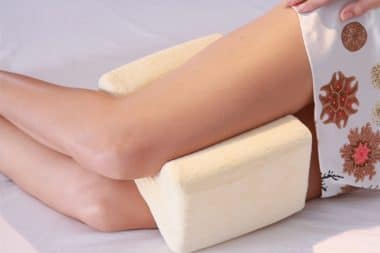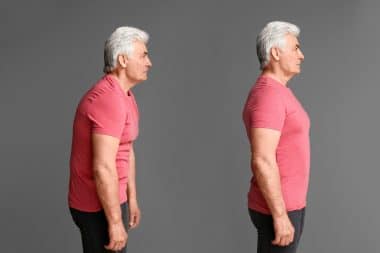The temporomandibular joint is a swing that links your jawbones to the temporal bones of your skull. The joint helps you to shift your jaw up and down and sideways. Through these movements, people converse, bite, and yawn, meaning that just how efficiently the jaw joint functions is very important. TMDs affect close to 15% of the adult US population, which creates a significant need for education and early treatment.
You, or someone you know, may encounter issues with your jaw and facial muscles, known as temporomandibular disorders (TMD or TMJ). This article explains the causes, symptoms, and available treatment for this condition.
Causes of TMD
TMD happens due to various factors, including hereditary, arthritis, or and jawbone injury. Research has found that patients with this problem often gnash their teeth – sometimes without being aware of it. Also, injuries to your mandible and head muscles can cause TMD. Here are the other causes of the problem:
- Joint conditions: Diseases like osteoarthritis and rheumatoid arthritis.
- Severe Trauma: Acute injury to your head, jaw, or neck can cause TMD.
- Stress: It leads to the tightening of facial and jaw muscles and the grinding of teeth.
Symptoms of TMD
Here are some signs and symptoms of this condition:
- Locked or stuck jaws in either open or closed position
- Tender neck, shoulders, face, and joint when you are chewing
- Popping and clicking sounds made by the jaw when you attempt to chew or open the mouth
- Jigsaw teeth, as if the lower and upper teeth are not fitting together
- Swollen face
- Toothaches, headaches, neck aches, and earaches
- Dizziness and hearing problems with ringing in the ears
- Upper shoulder pains
Diagnosis of TMD
Your dentist may refer you to an orofacial pain specialist for diagnosis and to establish a treatment plan.
They will observe the range of your motions as you open and close your mouth and ask questions about your health history and will also conduct a physical exam and.
The examination may include examining your head, neck, and jaw to determine where the discomfort is. Then check the jaw joints for tenderness or pain and listen to whether the jaws are clicking or locking when you move them.
Your pain specialist or dentist will also check if the teeth are fitting together when you bite.
It is likely that they will take an X-ray or conduct other tests to check the temporomandibular joints and teeth for proper functioning.
Examples are an MRI (Magnetic Resonance Imaging) or a computer tomography or CT scan. This way, they can view the TMJ disc to ascertain that it’s in the proper position and how it functions. This information will help establish whether or not you are suffering from TMD.
Home Treatment for TMD
Your pain specialist or dentist will tell you that you can do some of these treatments on your own and relieve the TMD symptoms fast. Some of these conservative treatments work as a combination of more than one method. Here are TMJ treatment options for home care.
1. Use Moist Heat or Cold Packs
Apply an ice-cold pack to your temple for about 10 minutes and exercise the jaw if your doctor or dentist recommends it. Afterwards, hold a warm cloth to the affected side for a few minutes and repeat the routine several times each day.
2. Over-the-Counter Medications
You can take over- the- counter anti-inflammatory drugs which are nonsteroidal (NSAIDs). The best examples of these are ibuprofen and Naproxen, which will relieve muscle pain and reduce swelling. Depending on the severity of your condition, your health provider will prescribe something heavier like narcotic analgesics or muscle relaxants.
3. Corrective Dental Treatment
Such treatments include the use of crowns, bridges, braces, or replacing missing teeth. These treatments will help to balance your bite and keep the jaws properly aligned and balanced.
4. Eat Soft Foods in Small Pieces
Soft food will remove unnecessary straining of your jaws if you cut them into small pieces. Foods like mashed potatoes, cheese, fish, fruits and vegetables, scrambled eggs, and beans are good choices.
5. Minimize Extreme Jaw Movements
Keep chewing and yawning to a minimum. Do not shout, sing or force the jaws to open wide.
6. Practice Good Posture
Avoid bad posture habits like supporting your hand with your chin or holding your phone between your shoulder and ear. Instead, practice good posture to reduce the pain and strain of the neck.
7. Keep Your Teeth Unlocked
Do not keep your teeth locked together. Instead, keep them slightly apart to relieve pressure on your jaw and keep your tongue between them to control any clenching.
8. Relax
It is paramount that you learn massage techniques to loosen up the jaw. Your orofacial pain specialist may recommend physical therapy or massage. Try using biofeedback or stress-reducing therapies.
9. Treatments and Medications
Medications may be a part of TMD treatment. In more severe cases, your orofacial pain care provider may prescribe the correct doses of painkillers and anti-inflammatory drugs when you need them.
Should you need muscle relaxers or anti-anxiety medication, their use should be carefully monitored by your dentist or pain care clinic.
10. Splints and Night Guards
Splints and night guards are specially designed mouthpieces that control the effects of clenching to make sure your teeth are in the proper position when you bite.
You may only need one or the other. Ask your orofacial pain specialist which one you need.
Additional TMD Treatment Options
If all the treatments mentioned above do not work, your dentist can suggest any of the following.
- Transcutaneous electrical nerve stimulation (TENS): This technique is effective in relieving pain.
- Ultrasound: It helps in relieving soreness.
- Trigger-point Injections: It offers relief from facial muscle pain.
- Radio wave therapy: stimulates the joint and increases blood flow causing pain relief.
- Low-level Laser therapy: to lower the pain and inflammation to help with your neck movements.
Surgical procedures for TMD
The surgical option is invasive and should be used when all other techniques fail. Here, the doctors have two choices:
Arthrocentesis; is a minor procedure that the doctor will perform under local anesthesia. Your doctor or dentist will recommend it if the jaw locks suddenly.
Arthroscopy will be performed under general anesthesia and involves using a tiny incision, and it’s less complicated and recovery time is shorter.
Open-Joint Surgery will take longer to heal and will most likely leave marks. Nevertheless, if your health caregiver deems it necessary, he will recommend it.
An Encouraging Outlook
The TMD disease rarely poses a threat to life but it may impact your quality of living. Getting professional help early on is the most important step to take.








Reply